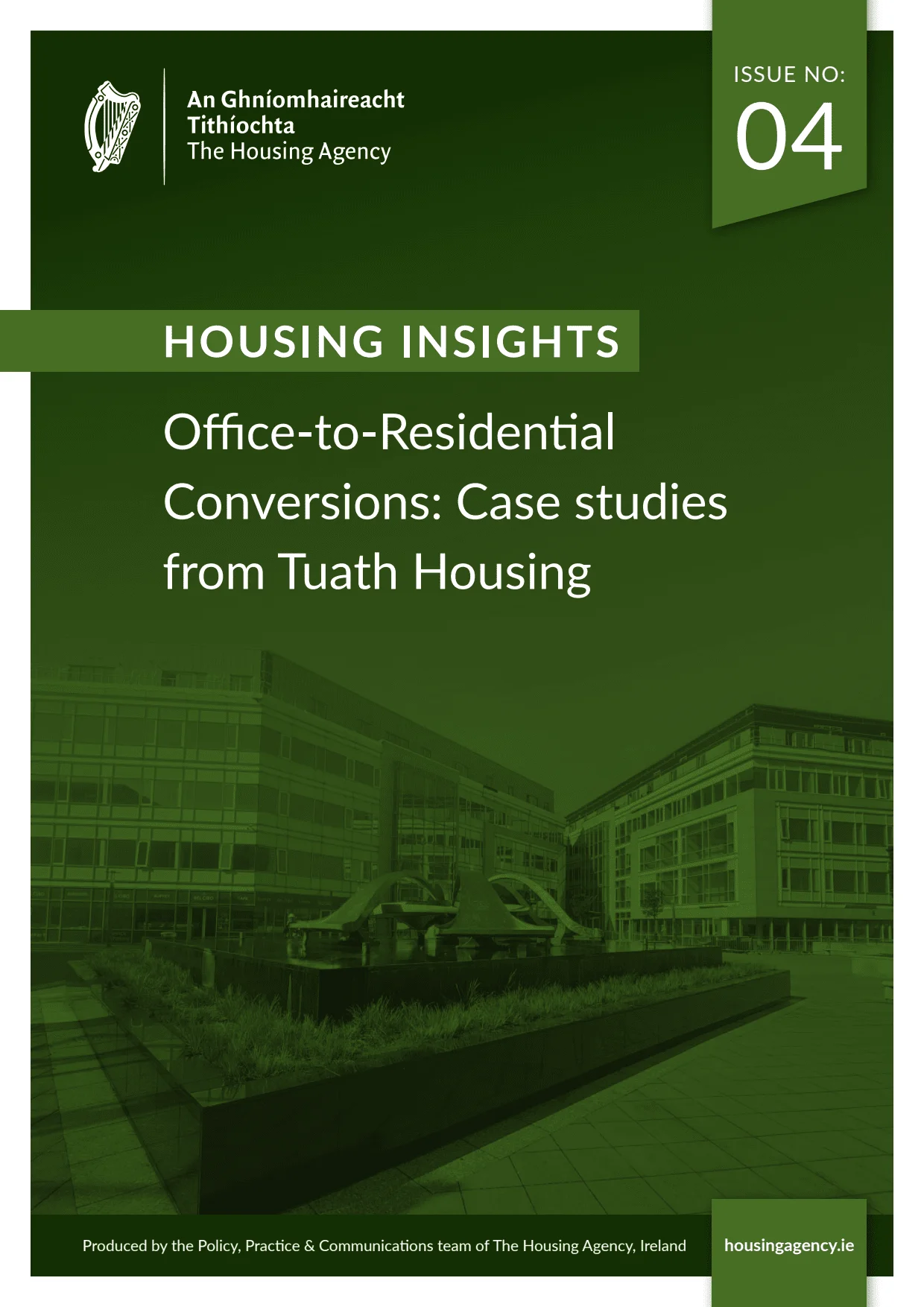🏠Context and Publisher
This report titled "Housing Insights - Office-to-Residential Conversions: Case studies from Tuath Housing" is produced by The Housing Agency, a government body in Ireland. The agency collaborates with various stakeholders, including the Department of Housing, local authorities, and Approved Housing Bodies (AHBs), to address housing needs and promote sustainable communities. The report aims to share best practices in housing and innovative solutions among practitioners in Ireland.
📈Increasing Housing Demand
In response to the growing housing need, Tuath Housing has successfully converted two vacant commercial properties into residential units. The first project, located at the Plaza Building in Park West Business Park, Dublin, delivered 86 social housing homes, while the second project at Springville House in Cork provided 35 social homes. These initiatives are part of a broader strategy under the Government’s Housing for All programme, which emphasizes addressing vacancy in existing properties.
📊Commercial Vacancy Rates
Commercial vacancy rates in Ireland have been on the rise, reaching a 10-year high of 14.1% by June 2023. The increase in vacancies has been attributed to changing work patterns, with a significant shift towards hybrid working models since the COVID-19 pandemic. This trend has resulted in a growing number of vacant commercial units, presenting opportunities for conversion to residential use.
🌍Environmental Impact
Repurposing vacant buildings offers significant environmental benefits. The report highlights that office-to-residential conversions can save up to 73% in embodied carbon compared to demolition and new construction. This aligns with the government’s objective to enhance sustainability in the housing sector, as 37% of carbon emissions in Ireland originate from the construction industry.
🔍Planning Regulations
Recent changes in planning regulations have facilitated the conversion of commercial buildings into homes. The Planning and Development Act (Exempted Development) Regulations 2022 introduced exemptions that encourage the productive reuse of vacant commercial properties, extending the exemption period until December 2025. This legislative support is essential for promoting sustainable housing solutions.
💡Successful Conversion Projects
Tuath Housing's projects at Park West Plaza and Springville House exemplify successful office-to-residential conversions. In Park West, two long-vacant office blocks were transformed into 86 apartments, while Springville House was adapted to create 35 social housing units. These conversions involved collaboration with local authorities and developers, addressing various planning challenges and ensuring the needs of future residents were considered.
🏘️Community and Social Benefits
The conversions have not only provided new housing but also fostered a sense of community. Park West Plaza is now home to over 200 residents who were previously on the housing waiting list. Both projects have incorporated community spaces and amenities, enhancing social interaction among residents and contributing to a cohesive living environment.
📉Cost Efficiency
The average development costs for the conversions were significantly lower than traditional new builds. Park West units were delivered at an average cost of €309,000 per unit, while Springville House averaged €353,000. These cost-effective solutions demonstrate that office-to-residential conversions can be financially viable while meeting urgent housing needs.
🔗Future Outlook
As urban areas continue to grapple with commercial vacancies, the successful case studies from Tuath Housing could serve as a model for similar projects across Europe. The potential for office-to-residential conversions presents an opportunity to address both housing shortages and sustainability goals, ultimately contributing to the revitalization of urban spaces and the promotion of sustainable communities.

